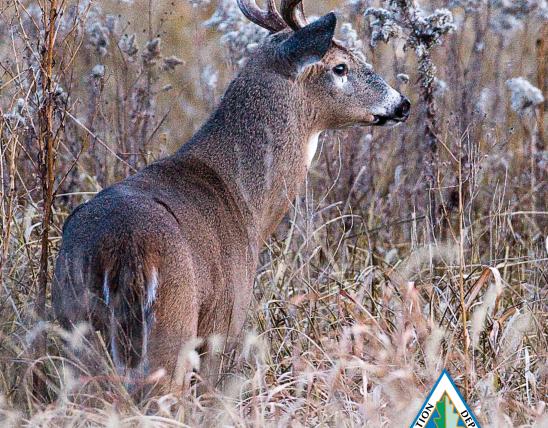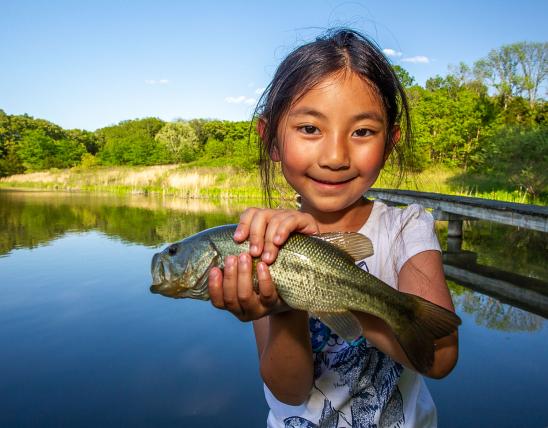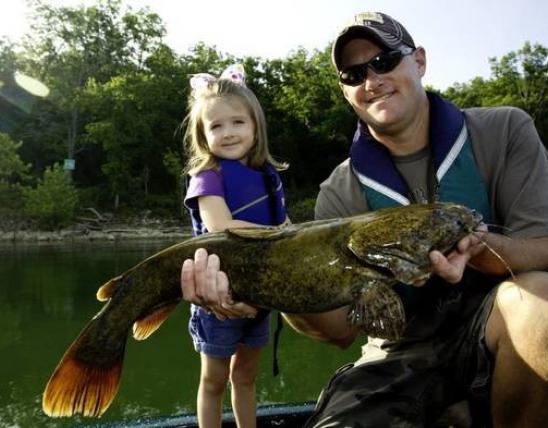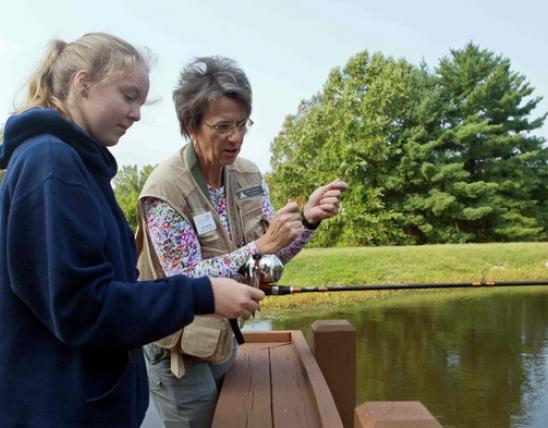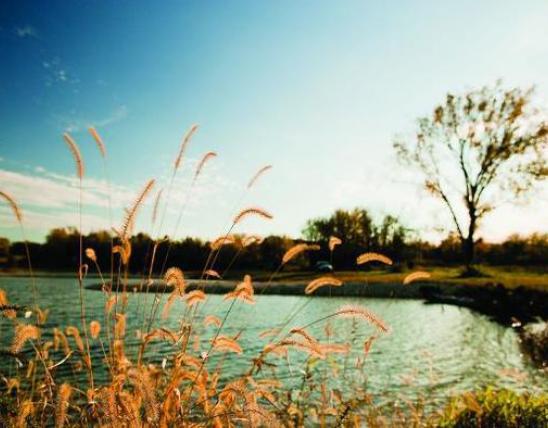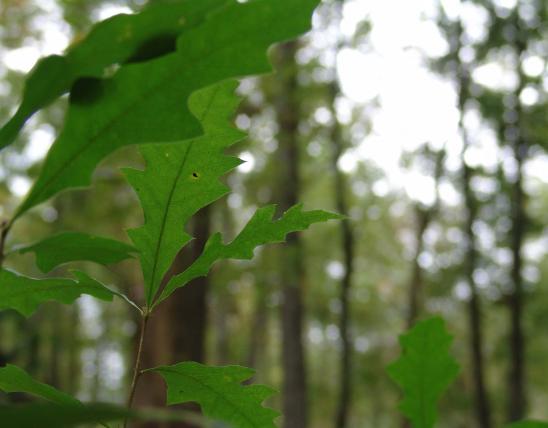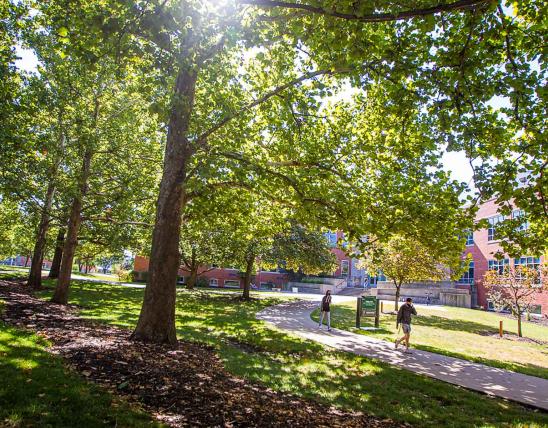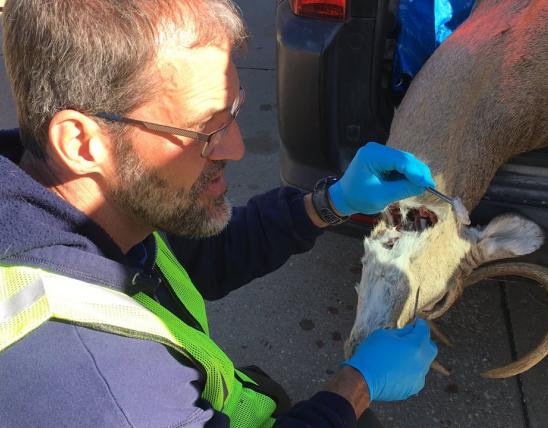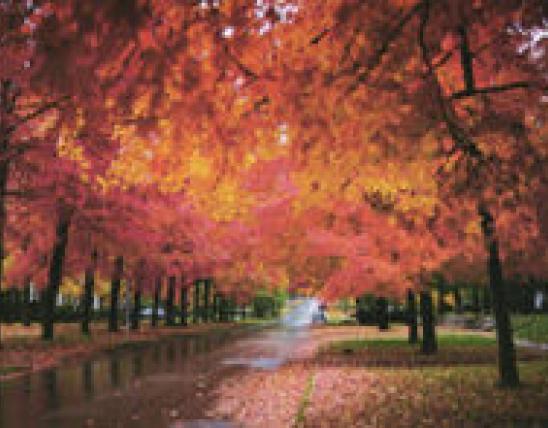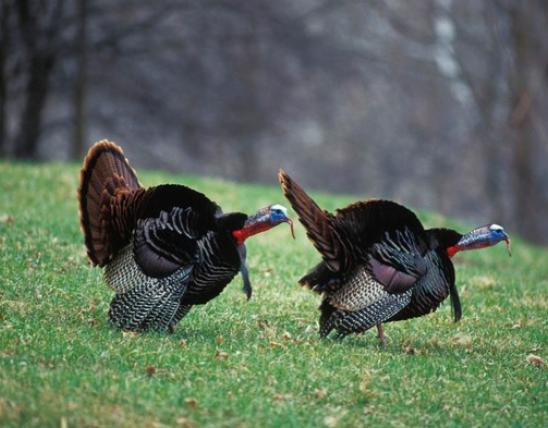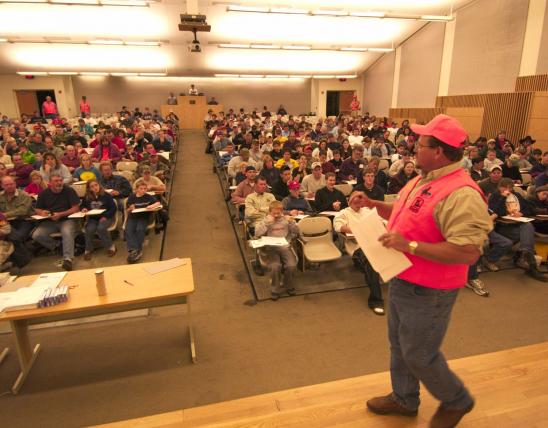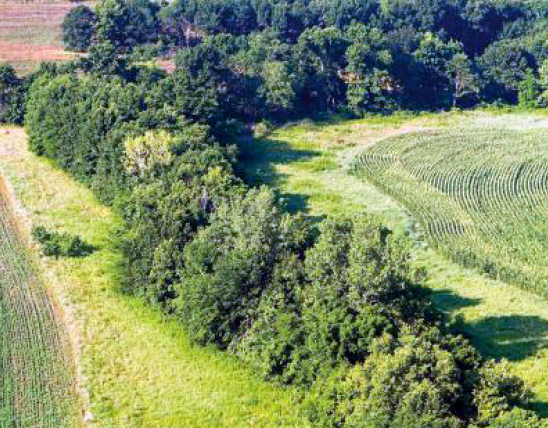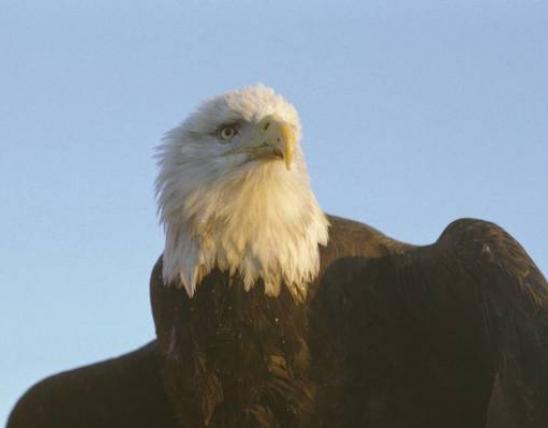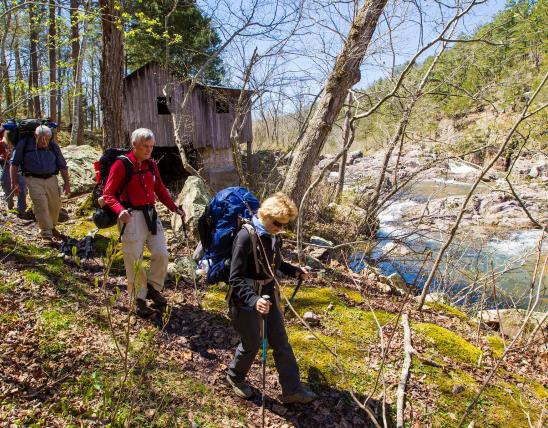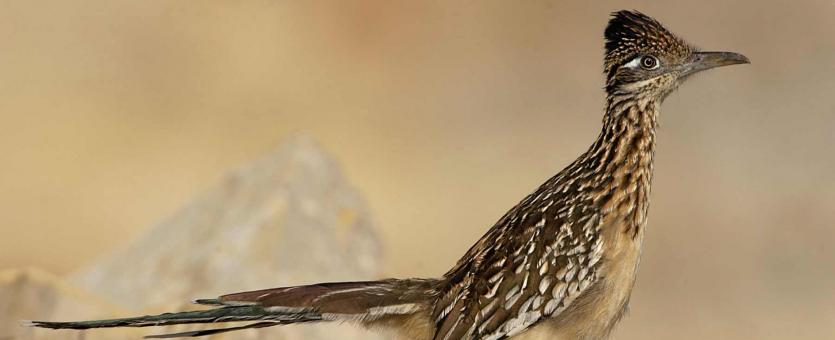
The greater roadrunner is in the cuckoo family, and its long tail; long, heavy, downcurved bill; and four toes positioned like an X reflect this relationship. This species runs on the ground, is relatively large, and has short, rounded wings. It has a brown and pale streaked appearance, darker above than below. The tail is long and dark with white edges, the legs are strong and long, and the head feathers are crested. The call is a descending series of “coos.”
Length: 23 inches (tip of bill to tip of tail).

Usually only in the Ozarks. Most common in our southwestern counties.
Habitat and Conservation
In our state, greater roadrunners are found in glades, open woodlands, and occasionally in parking lots or along roadsides. They were first reported in our state in 1956 near Branson. By the 1970s some had spread as far north as the Missouri River in Osage County, but several cold, snowy winters drove them back. They rebounded by the 1990s and have been seen as far north as Jefferson City.
Food
Although omnivorous enough to eat fruit and seeds, the greater roadrunner is a remarkable predator, running down and snatching up insects, small reptiles and mammals, spiders, scorpions, and even small birds.
Status
Nongame. Rare permanent resident in southwestern Missouri. The greater roadrunner is listed by the state as a species of conservation concern.
Life Cycle
Using sticks and a lining of softer materials, greater roadrunners construct platform nests close to the ground in bushes and typically lay 3-6 eggs. After about 20 days, the chicks hatch, and they fledge after another few weeks. There are one or two broods per year.
Human Connections
People enjoy watching roadrunners, particularly here in Missouri where their presence still seems like a novelty. Watching them in real life is much more fascinating than watching them on cartoons!
Ecosystem Connections
Roadrunners help control local reptile and insect populations. As a species sensitive to cold winters, its range fluctuations can provide data for scientists tracking climate change.



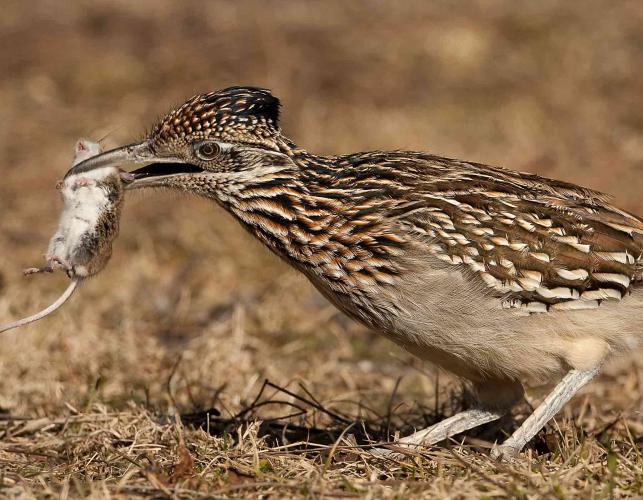


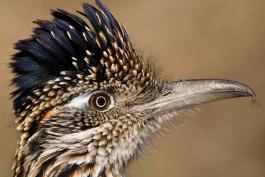




Where to See Species
About 350 species of birds are likely to be seen in Missouri, though nearly 400 have been recorded within our borders. Most people know a bird when they see one — it has feathers, wings, and a bill. Birds are warm-blooded, and most species can fly. Many migrate hundreds or thousands of miles. Birds lay hard-shelled eggs (often in a nest), and the parents care for the young. Many communicate with songs and calls.

